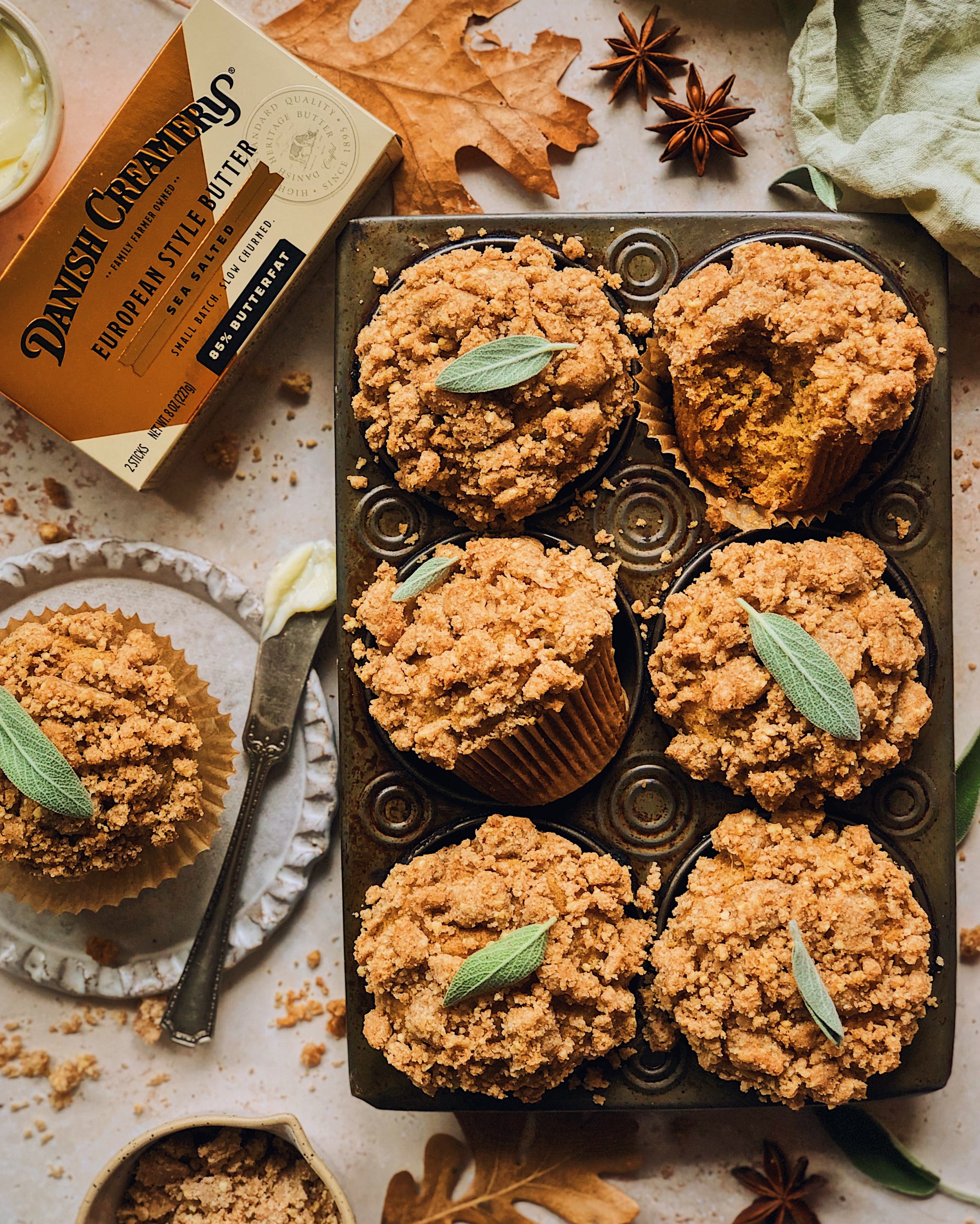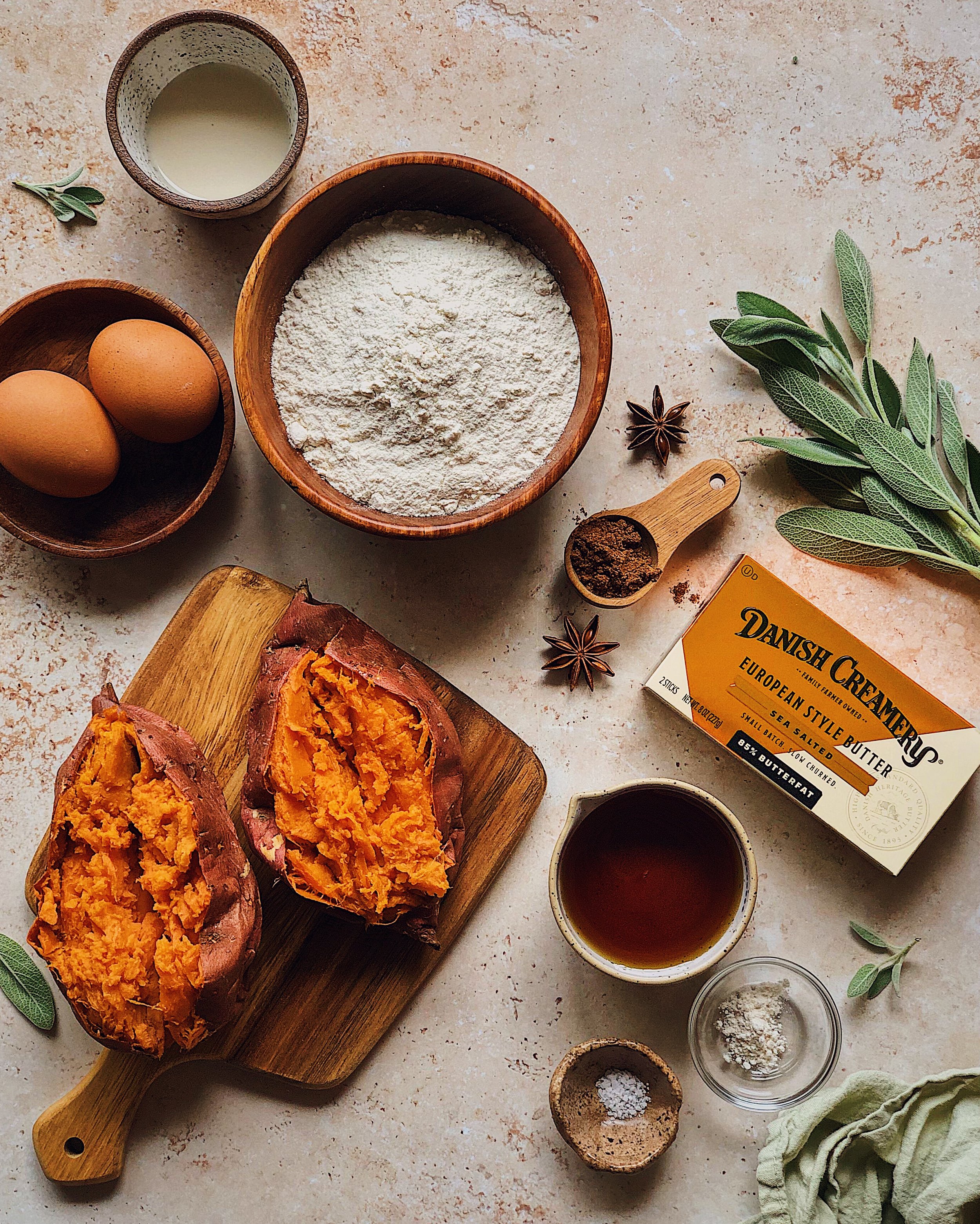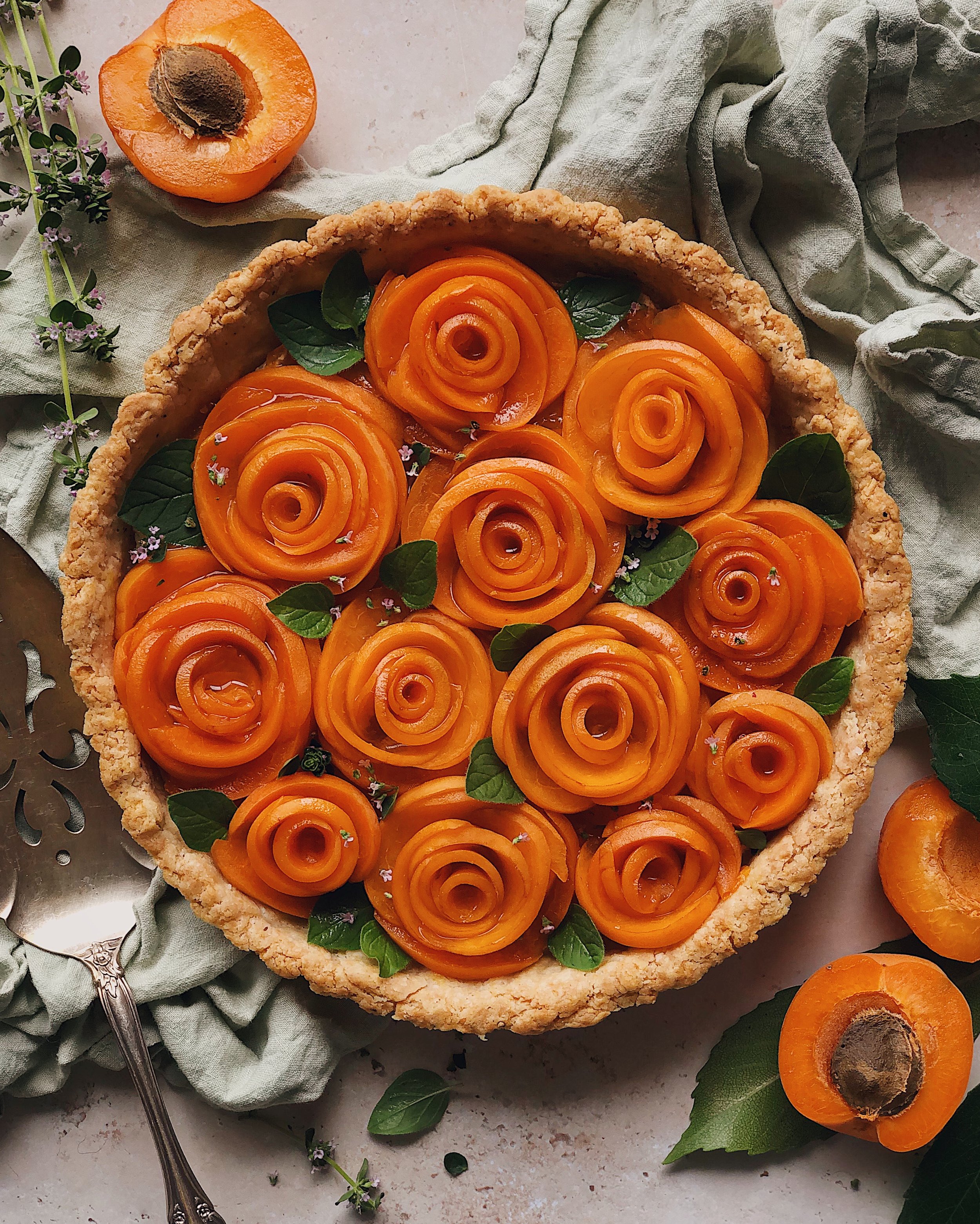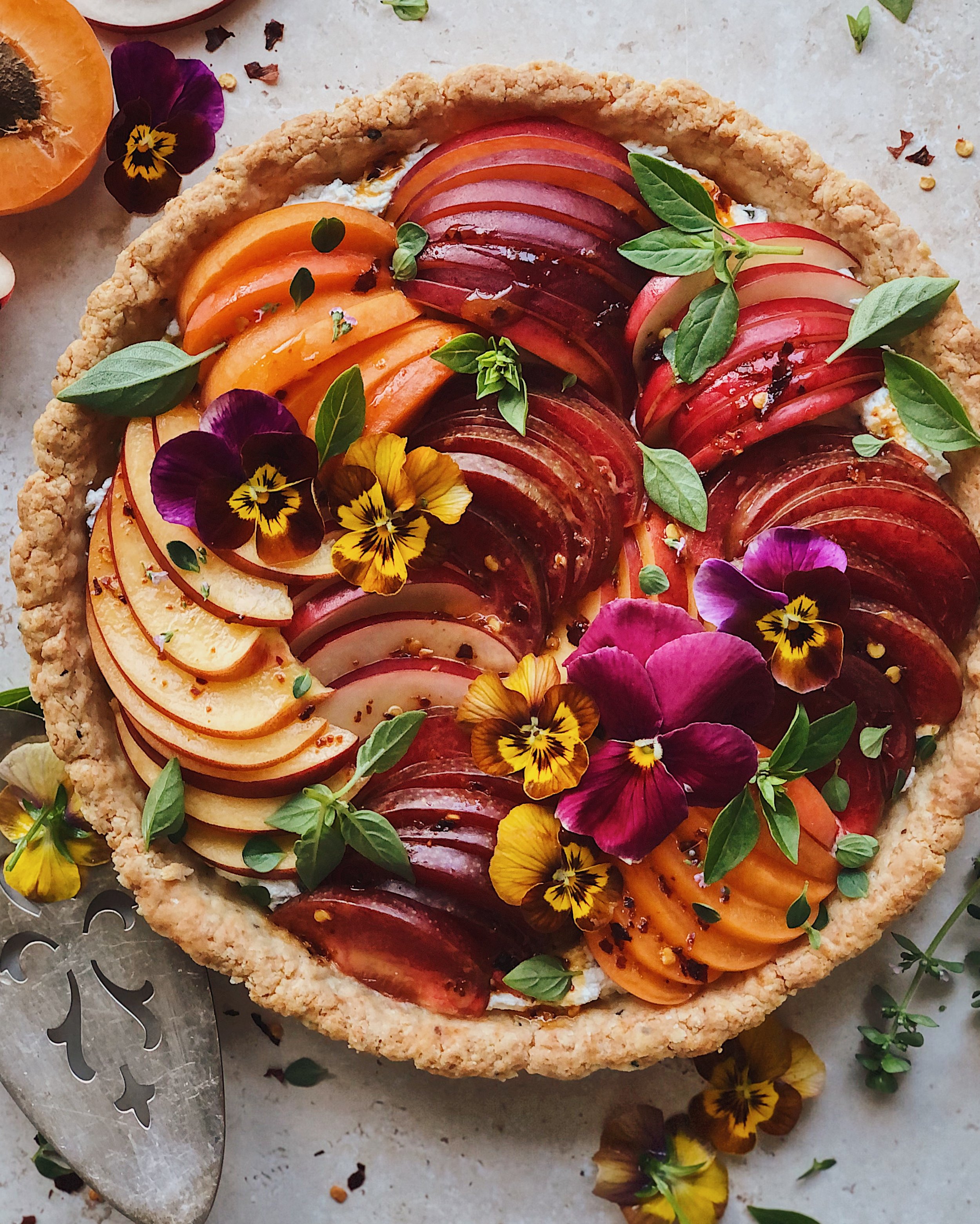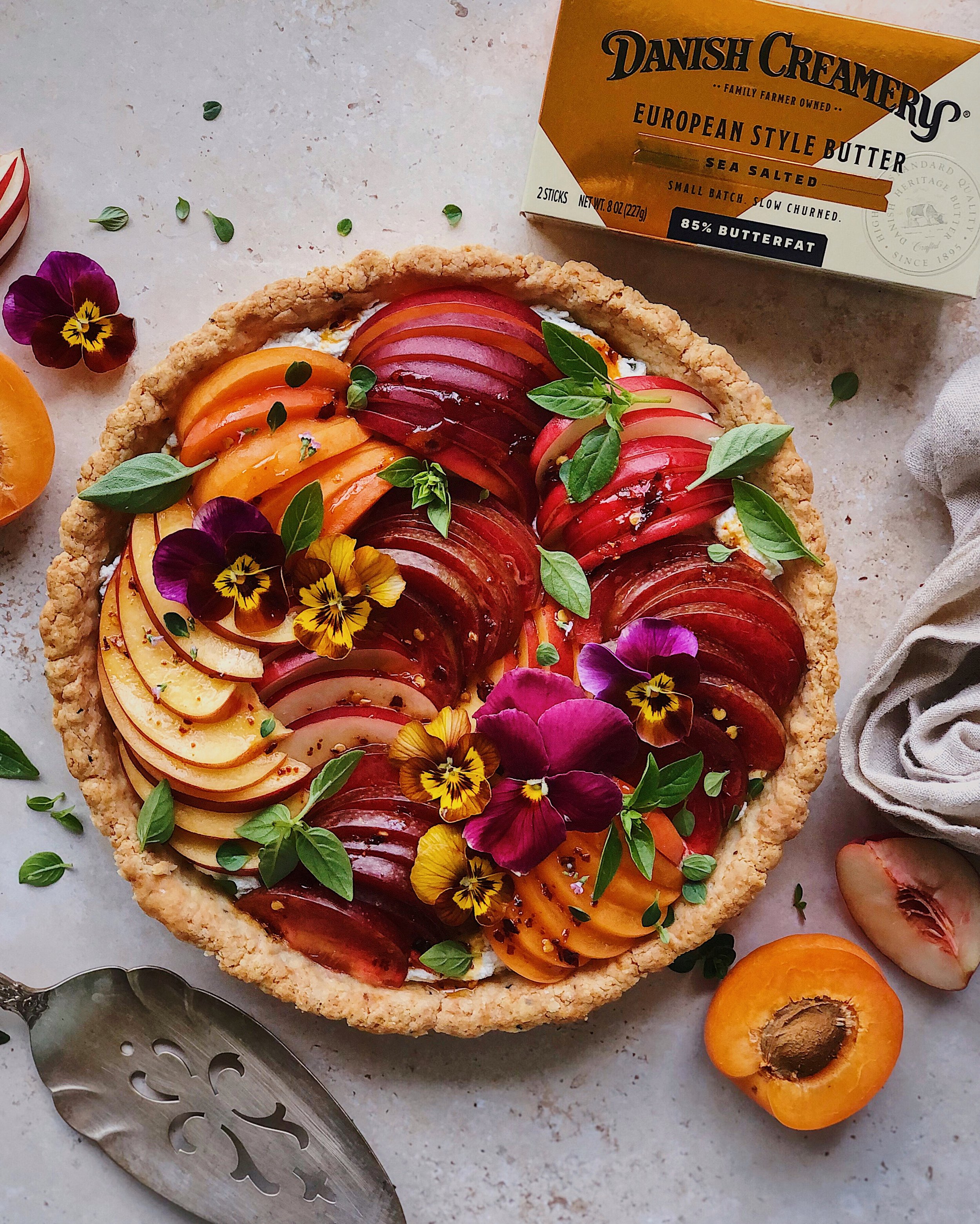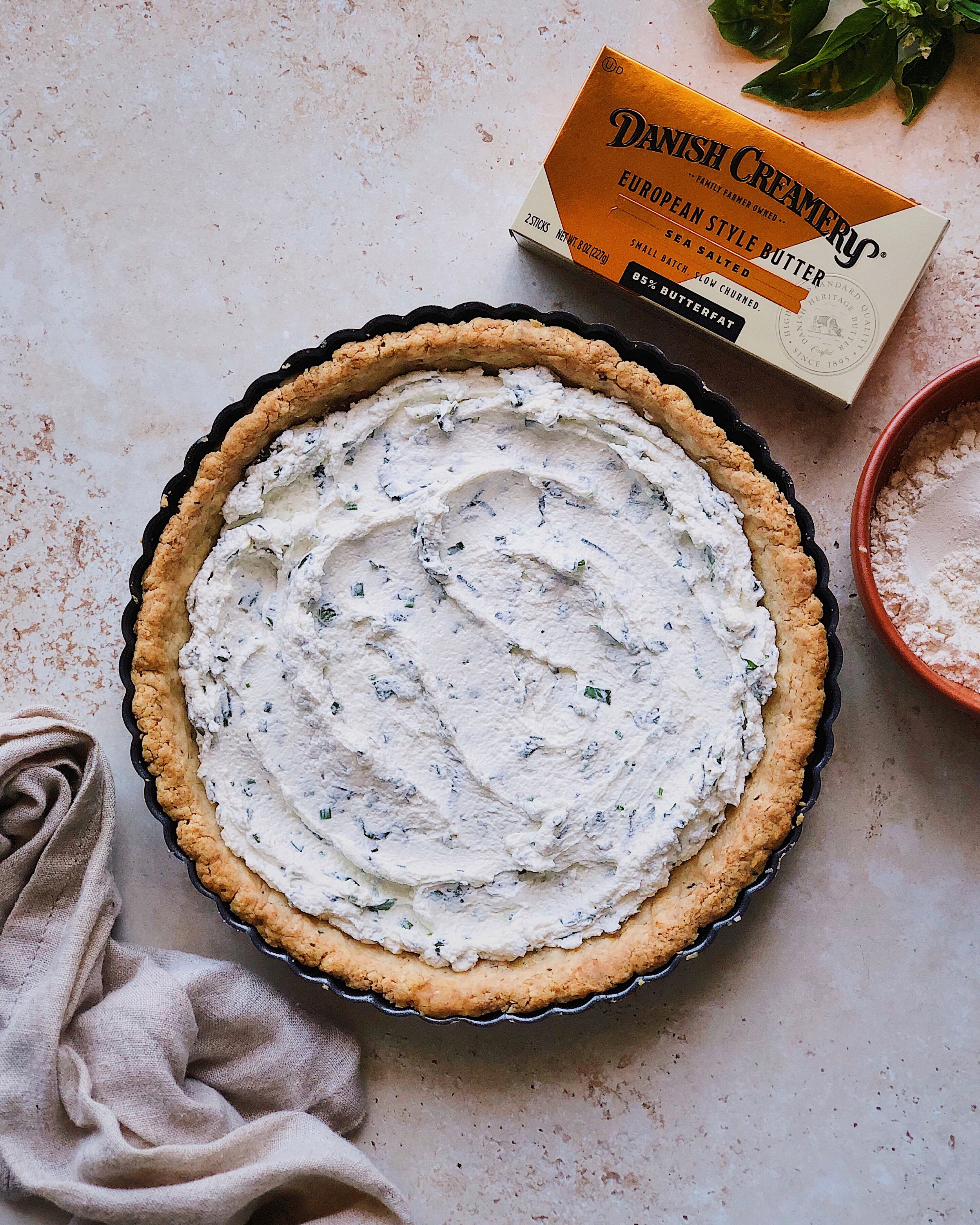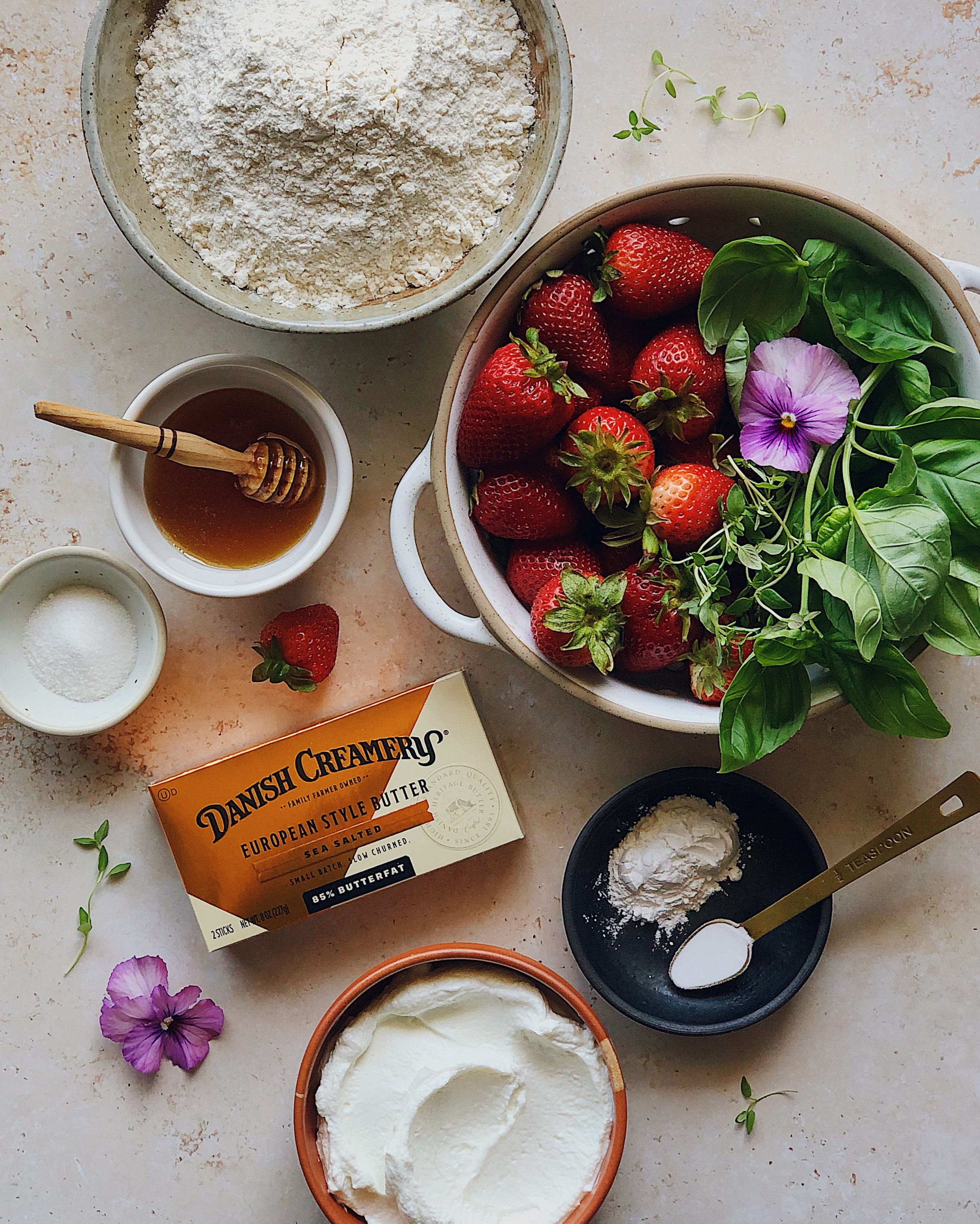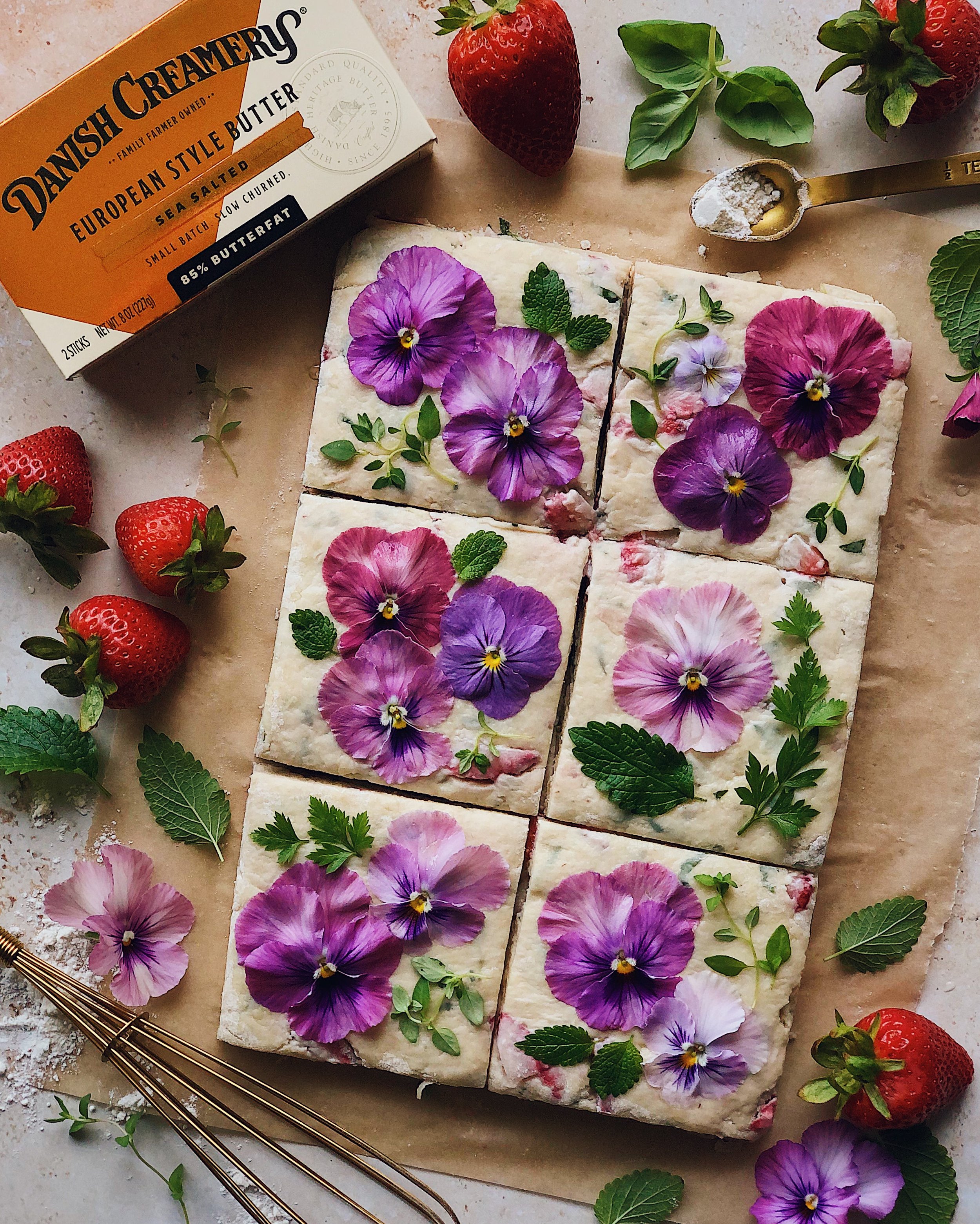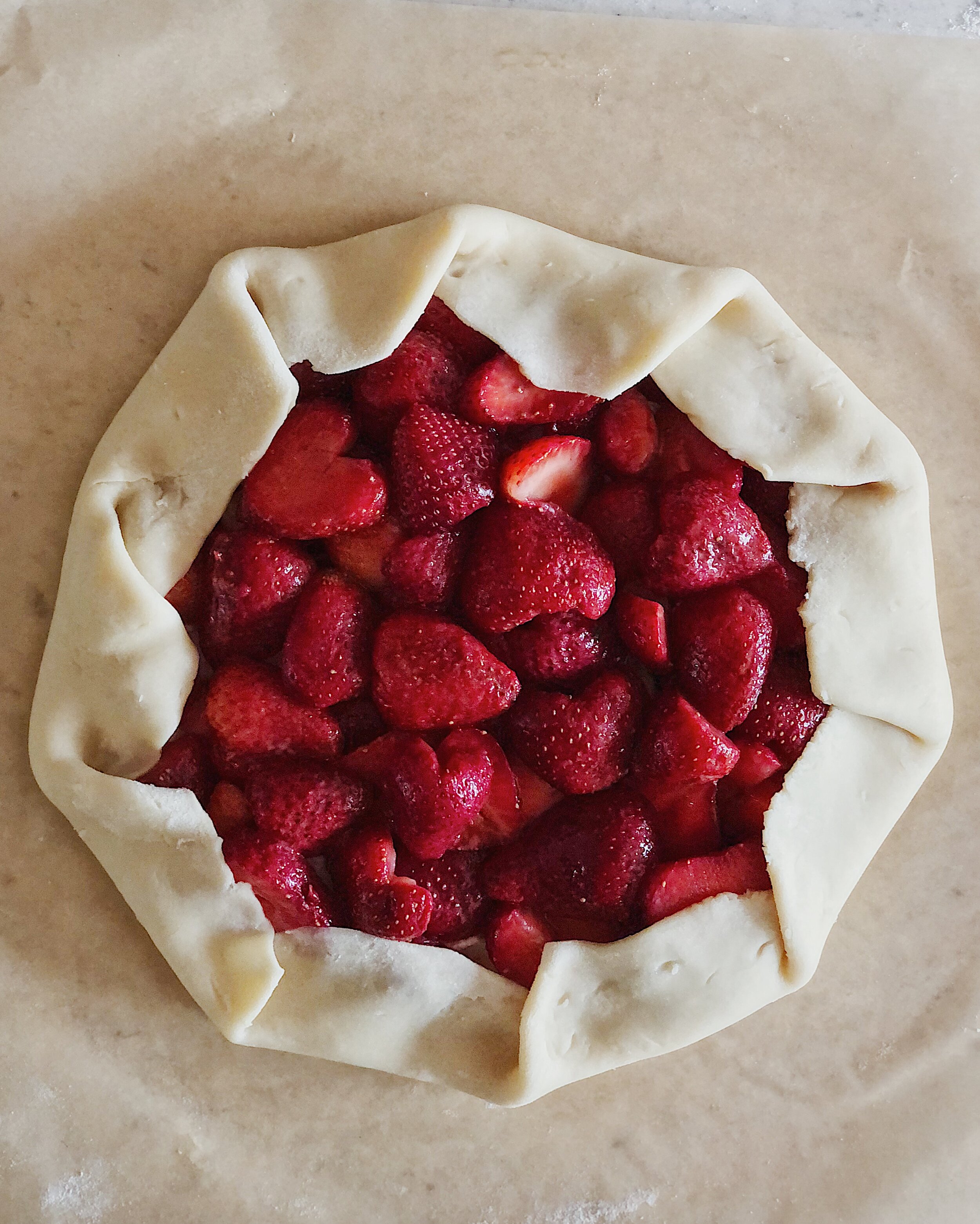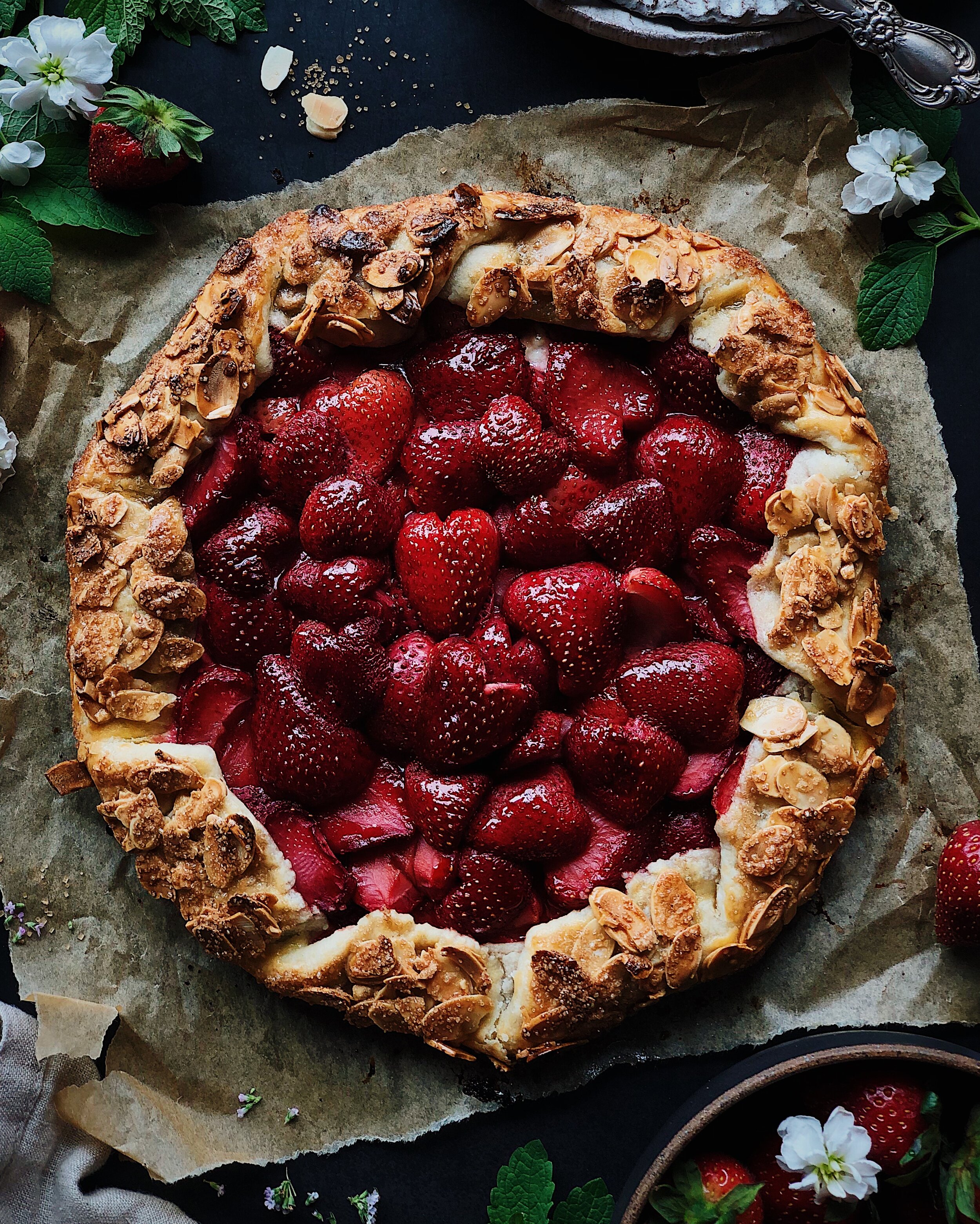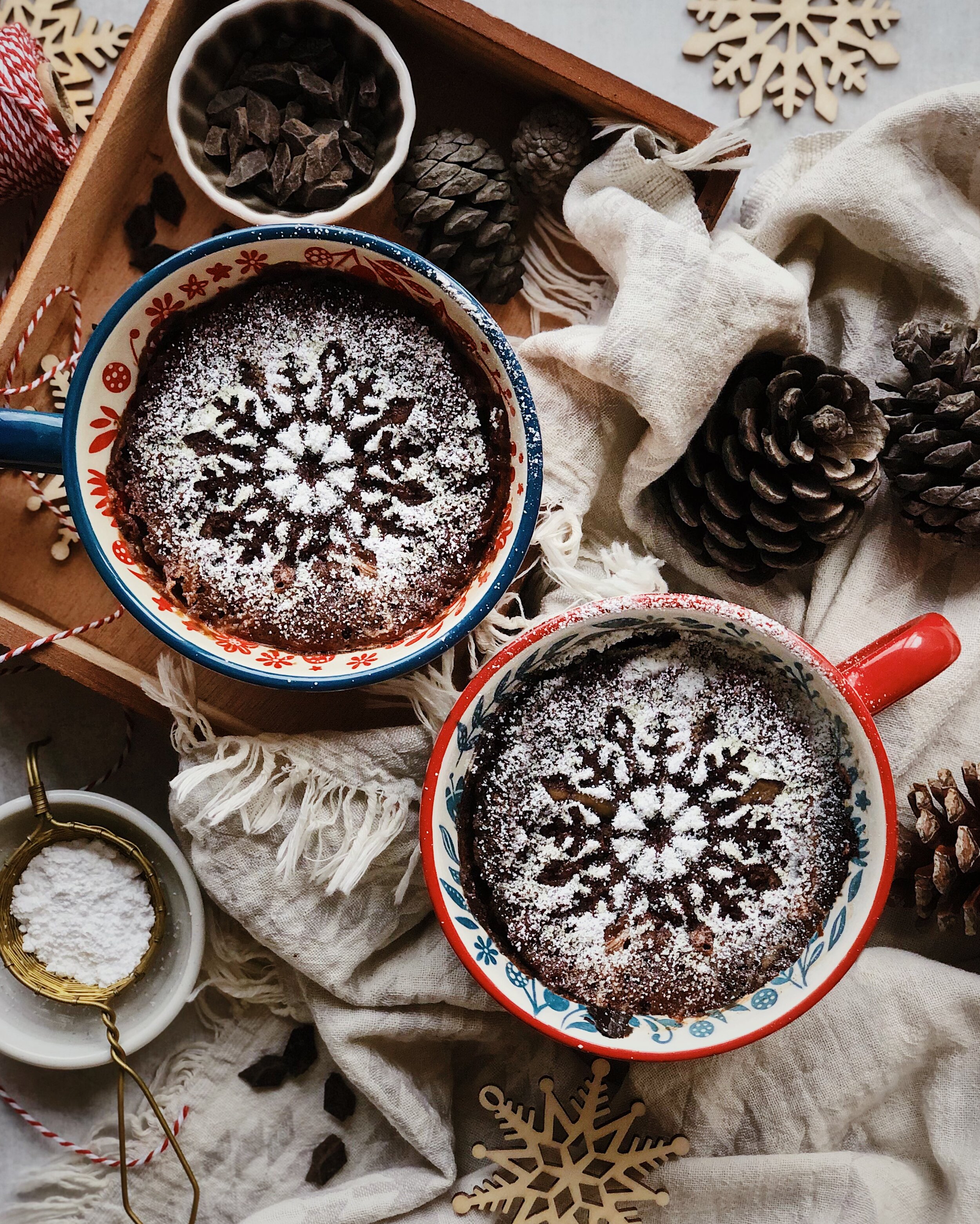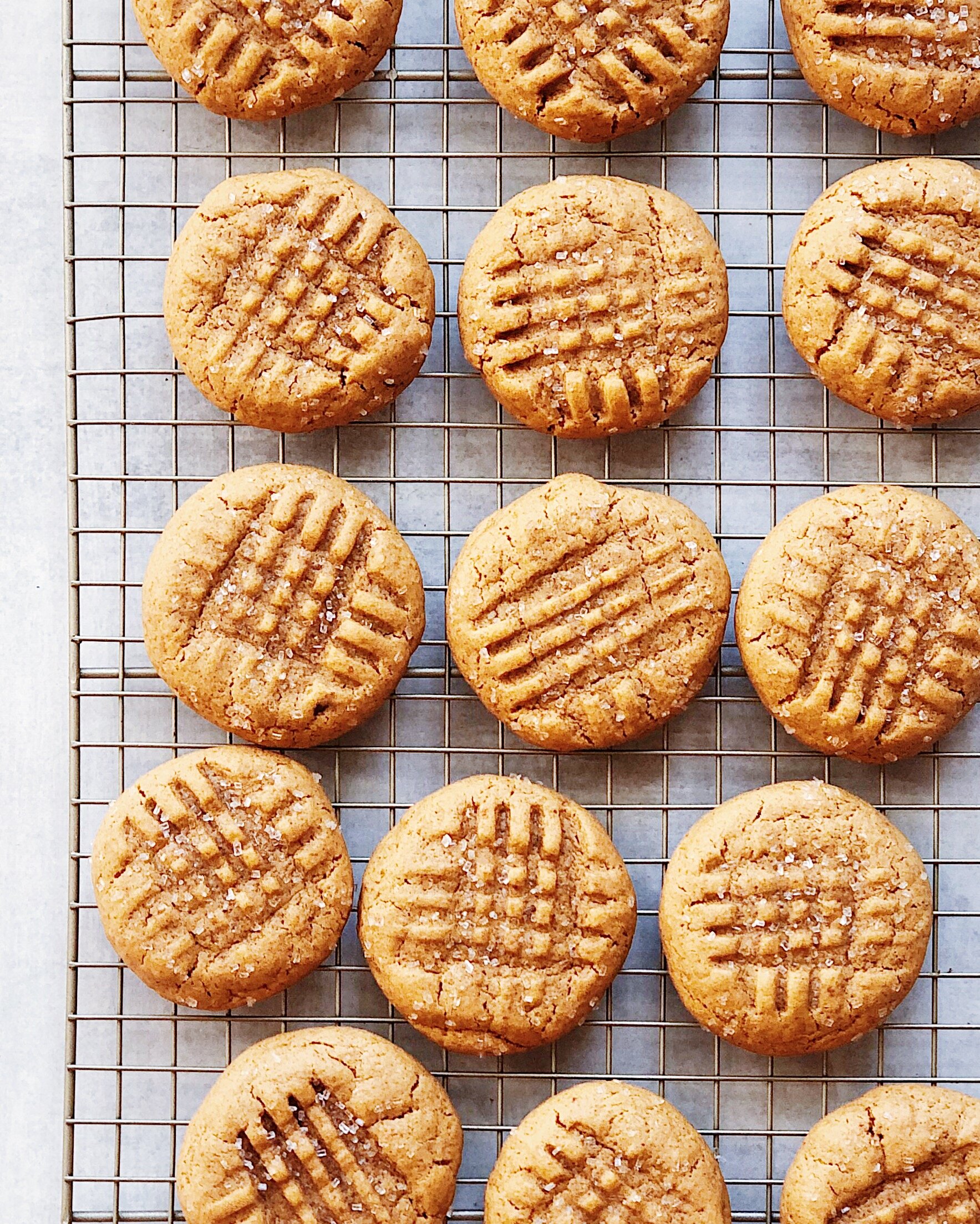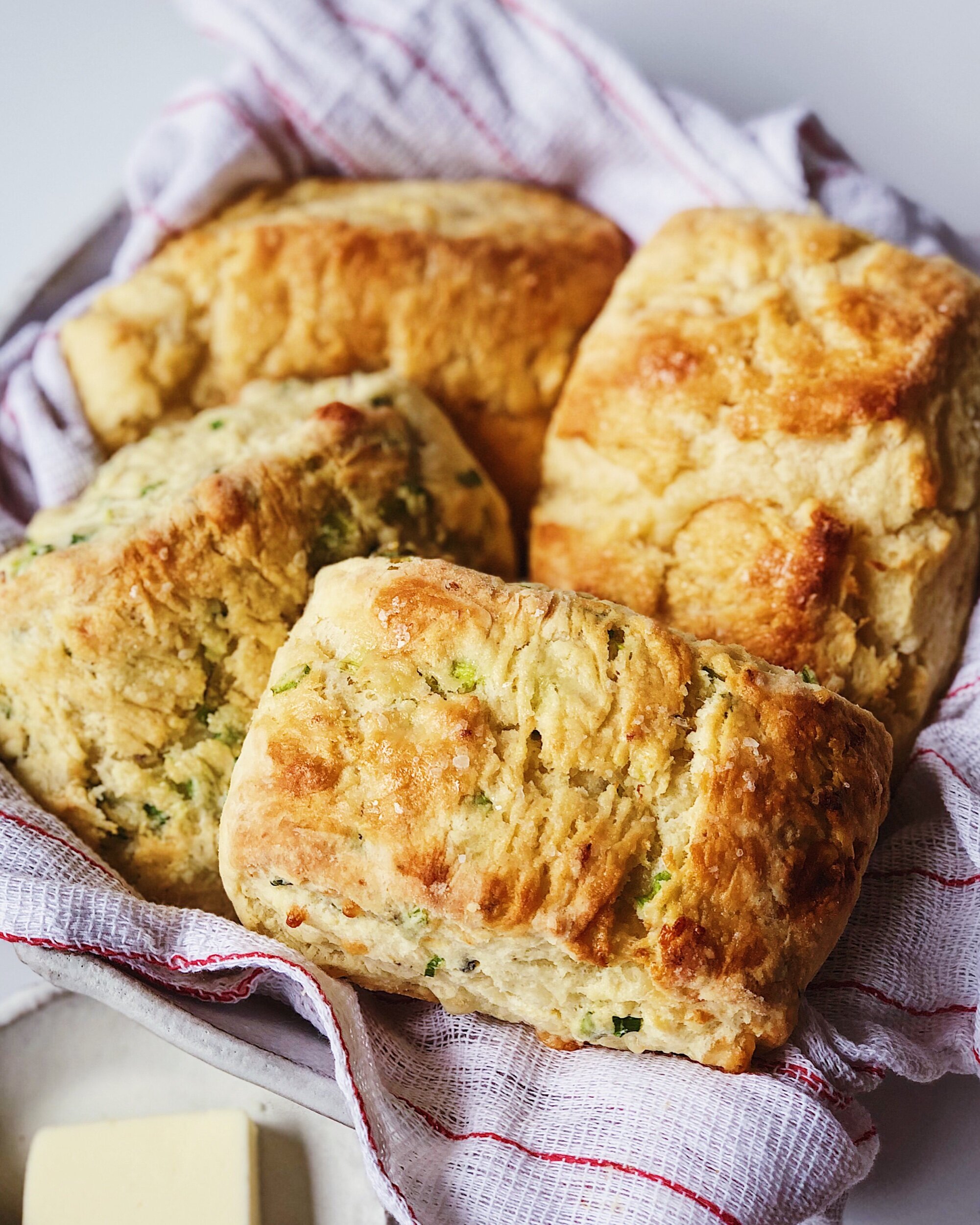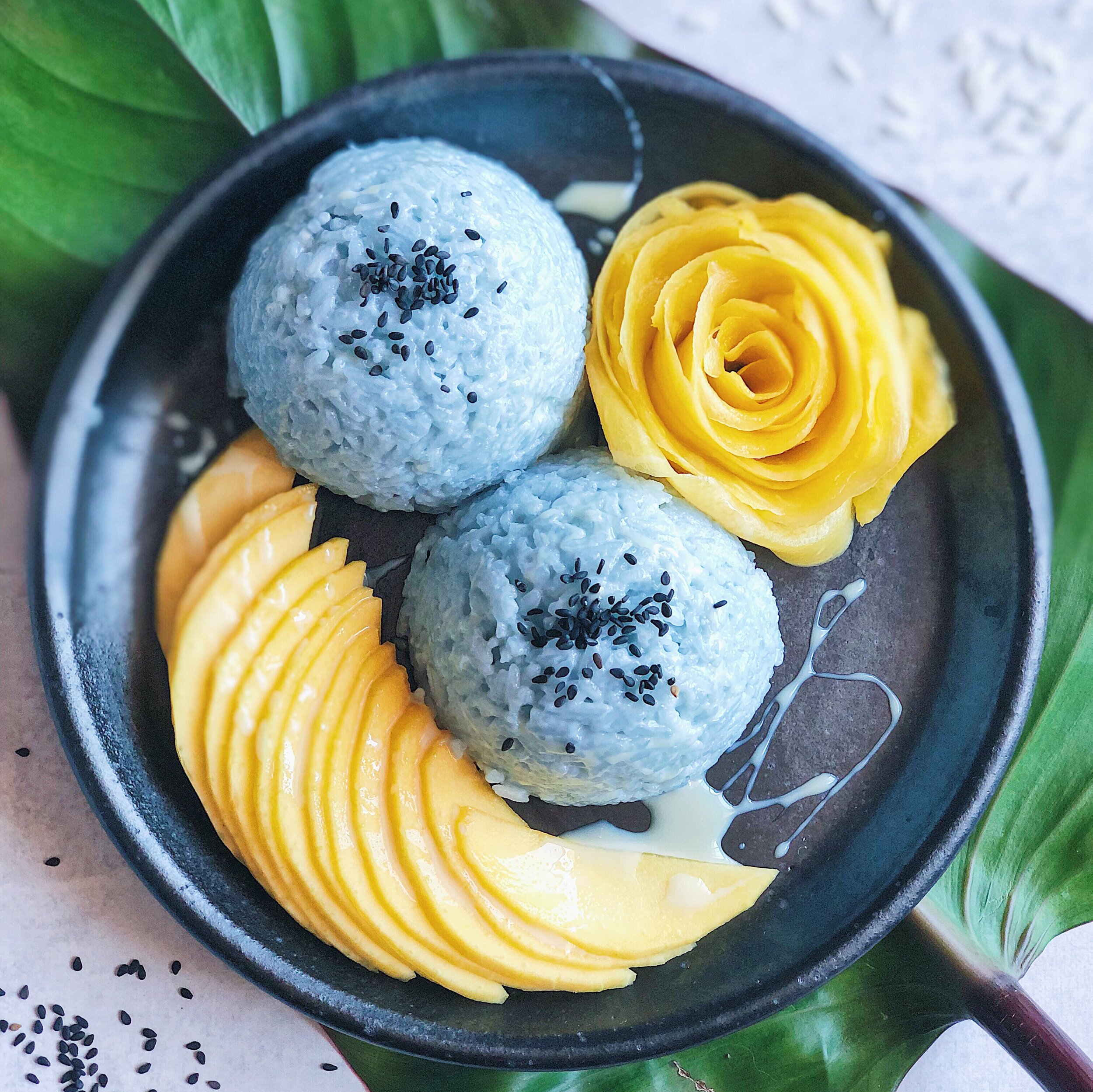Recipe: Brown Butter Sweet Potato Sage Streusel Muffins
/For this recipe, I partnered with Danish Creamery to come up with a tasty fall treat. I love baking in the fall, warming up the house with the smell of cozy spices. But as you may know by now, I do not have the biggest sweet tooth, so I wanted to create a recipe for something that feels like a treat and has all the best of flavors that the season has to offer but is *not too sweet*. These muffins are made by first making brown butter with Danish Creamery European Style Sea Salted Butter to give it a wonderful nuttiness, before using it in a batter that’s loaded with sweet potato, fresh chopped sage, and Chinese five spice, sweetened with maple syrup. The streusel topping is also made with brown butter and I added a touch of salt and ground peanuts, giving it a little bit of a sweet-salty vibe that I think is quite addictive!
I’m calling these “muffins” but don’t expect the bready, crumbly kind—these are rich and moist from all that brown butter and fresh mashed sweet potato. The texture on the inside is going to be similar to a decadent carrot cake or banana bread but to provide a nice contrast, the streusel topping is crumbly and light, almost like the edges of a cookie.
With the brown butter being such a major ingredient in both components, you’re going to want to use a high-quality butter to start. Danish Creamery European Style Sea Salted Butter is made with just high-quality cream and a touch of sea salt and it is slow-churned in small batches for a velvety texture and rich flavor. It contains 85% butterfat, which beats out most other European style butters that contain 82%–83%. Browning butter is actually a good way to determine the richness of a butter; avoid butters that create a lot of splatter as they are melting, as that is an indication of their higher water to fat ratio. This butter, on the other hand, melted very smoothly and foamed up gently before turning the rich amber-colored liquid gold that is toasty brown butter!
Let’s get into the details of what you’ll need to do to get these lovely autumnal muffins.
Key ingredients for the brown butter sweet potato muffin base:
Brown Butter: What is brown butter? To make brown butter, all you need is good quality butter like Danish Creamery European Style Sea Salted Butter (and a pot and a spatula)! Nothing else goes into it; you are simply cooking the butter and toasting the milk solids in it to intensify the flavor. Bring the butter to room temp first, then cut it into a few smaller pieces and put it in a light colored pot or pan; you’ll want to be able to watch the color so a dark pan is not recommended. Cook the butter on medium-low heat, swirling or gently stirring occasionally until it starts to get foamy. Once it starts to foam up, stir constantly for 2–3 minutes, watching the color. Once the color starts to change, take it off the heat and keep stirring until all the foam subsides, and what you’ll be left with will smell amazing and resemble the color of amber; if you remember the color of the stuff they extracted the dinosaur DNA from in Jurassic Park, that’s the color you want! (But it’ll be way tastier.)
Mashed Sweet Potato: This recipe requires the real stuff: fresh mashed sweet potato. You will need about 1 large-ish sweet potato to get the 1 cup needed for this recipe. I have tested this recipe with both steamed and roasted sweet potato and both turned out great. I do not recommend cooking your sweet potato by microwave as that will probably dry it out. My favorite method is roasting. To roast sweet potatoes: Preheat the oven to 425°F. Wash the sweet potatoes and prick them all over with a fork. Place the sweet potatoes directly on the middle rack of the oven. Place a foil-lined baking sheet underneath them to catch anything that drips. Bake for 40–50 minutes or until they are completely soft inside. You should be able to scrape them easily from the skins and mash them up with just the slightest amount of pressure. You do not need a perfectly smooth purée for this recipe but there shouldn’t be big lumps. This can most definitely be done ahead; just bring it to room temp before using it in the batter.
Sage: I used 2 tablespoons of finely chopped sage for this recipe. I know that sage can be pretty divisive, but I love it. To me, it’s one of the flavors that makes Thanksgiving food special, even more so than the pie spices and the fall gourds. I actually felt that there could’ve been more sage flavor, but Spouse, who is not as much a fan of sage, thought that it was enough to notice it’s there without being at all bothered by it. I think that sage lovers could bump this all the way up to 3 tablespoons if they wanted. Conversely, if you hate sage, you can totally leave it out.
Maple Syrup: I used maple syrup as the only sweetener in the muffin batter because it brings a gentle sweetness and complements fall flavors so well. And ol’ maple syrup will do, as long as it’s the real stuff.
Chinese Five Spice Powder: I wanted to do something a little different for fall baking here, so instead of a blend of classic American pie spices, I used Chinese five spice powder. What is five spice? It doesn’t always have only five spices, but the number five is called out because the ingredients are meant to represent the five elements in Chinese mythology. It typically has cinnamon, star anise, clove, fennel, and sichuan pepper. I opted for this because it is a pantry staple for me and I liked that it is a little bit more savory-leaning. You can substitute a pumpkin pie spice blend if you don’t have it, but I find that the heavy cinnamon content in those makes the blends a bit stronger than five spice, so I’d reduce the amount if making this substitution.
Things to know about making the streusel topping:
Once again, you’ll be making brown butter for the streusel that goes on top of the muffins, giving them that appealing, crackly mushroom top. You could brown all the butter for the recipe at once and then measure it out for each component; however, I found it was easier to do them separately and use the measurement markings on the butter wrapper. Either way, you will want to make the streusel first anyway to give it a little bit of time to chill.
In addition to the brown butter, the other key ingredients for the streusel are a touch of five spice, dark brown sugar, regular white sugar, kosher salt, and unsalted roasted peanuts.
Why roasted peanuts? I included finely chopped peanuts in my streusel because I wanted the crumbly topping to have a salty-sweet quality to it, in the vein of kettle corn or salted caramel. The peanuts helped bring in a savory quality as well as nice texture to the streusel mixture, and combined with the kosher salt, the result is definitely a nice little touch of a salty balance for the maple and sweet potato muffin base. You can substitute in any nut you’d like for this. If you have a nut allergy, you could also sub in breadcrumbs, or finely crushed chicharrones!
How to get the most visually appealing muffins:
To get bakery-style muffins that are nice and full with a mushroom top, there are a couple of special but easy tricks I used here that I will now share with you. (Note that in the photos, I used a vintage muffin tin that is proportioned a little differently but to actually test the recipe and bake the muffins shown, I used a modern, standard muffin tin and standard paper liners.)
You’ll notice that this recipe makes 9 muffins. I filled the muffin cups all the way to the top using an ice cream scooper to scoop out the batter into a nice domed shape. The amount of batter will rise and fill out the muffin cups nicely this way. You can certainly divide the batter into 12 muffin cups, but they just won’t have the muffin top you see in the photos, and you’ll want to test for doneness a couple minutes early.
Another major trick is to give the muffins a burst of high heat at first to get the tops to really rise up, and then lower the temp for them to bake evenly through the rest of the way. I start the oven at 425°F for the first 5 minutes, and then turn it down to 350°F for the rest of the time. You can skip this step if you don’t have time to watch the oven, and just bake them at 375°F for 20–25 minutes.
The last tip is to really pile on the streusel topping. Even if the top looks totally covered when you first put the muffins in the oven, keep in mind that as they rise, the surface area of the tops will increase, creating gaps in between the chunks of streusel. This recipe makes a very generous amount of streusel for if you are making 9 muffins; you might not end up using every single crumb of it, but get on them as much as the muffin tin will allow to get fully streusel-covered muffins in the end.
Now that you know all my tricks for how to produce aesthetic muffins, happy baking!
How to Make Brown Butter Sweet Potato Sage Streusel Muffins
(Makes 9 muffins)
Ingredients for the Streusel
5 tbsp Danish Creamery European Style Sea Salted Butter, cut into chunks
1/3 (packed) cup dark brown sugar
2 tsp sugar
1/2 tsp Chinese five spice powder
2/3 cup all purpose flour
1/4 cup roasted unsalted peanuts, finely chopped
1/2 tsp kosher salt
Ingredients for the Muffin Batter
1/2 cup (1 stick) Danish Creamery European Style Sea Salted Butter, cut into chunks
1 3/4 cup all purpose flour
1 tsp baking powder
1 tsp baking soda
1 1/4 tsp Chinese five spice powder
1/2 tsp kosher salt
1/2 cup + 1 tbsp maple syrup
1/4 cup milk or nut milk
1 cup sweet potato, cooked and mashed*
2 eggs, beaten
2 tbsp sage, finely chopped
Notes
* Recommended method for mashed sweet potato: Preheat the oven to 425°F. Wash the sweet potato(es) and prick all over with a fork. Place directly on the middle rack of the oven. Place a foil-lined baking sheet on the rack below. Bake for 40–50 minutes or until completely soft inside. You should be able to scrape the flesh easily from the skins and mash with slight pressure. Sweet potato mash can be made ahead. Measure 1 cup and allow to come to room temperature before using in the recipe.
Procedure
To make the streusel:
Brown the butter: Cook the butter on medium-low heat, swirling or gently stirring occasionally until it starts to get foamy. Once it starts to foam, stir constantly for 2–3 minutes, watching the color. Once the color starts to change, take off the heat and keep stirring until all the foam subsides. The melted butter should now be the color of amber. Set aside.
Whisk together brown sugar, sugar, and five spice in a small bowl. Mix in brown butter. Add flour, chopped peanuts, and salt. Use a folding and pressing motion with a spoon or spatula to gently combine everything together; texture should be similar to a dry shortbread dough. Pack together into a disk and place in the fridge to chill for 5–10 minutes; it should feel slightly firmer but not be hard or solid.
To make the muffin batter:
Preheat oven to 425°F.
Follow the same instructions above to make brown butter. Set aside and allow to cool slightly.
In a medium bowl, whisk together flour, five spice, baking powder, and baking soda.
Once brown butter has cooled, transfer to a mixing bowl. Stir in salt, maple syrup, milk, sweet potato mash, eggs, and sage in that order. Gently fold in one third of the dry ingredients at a time. Combine until just homogenous. Batter should be thick but wet.
To assemble:
Line or grease 9 cups in a standard muffin tin. Divide the batter evenly among the 9 lined cups (using an ice cream scooper is recommended for this).
Use your hands to crumble up the disk of streusel dough into mixed sized chunks ranging from the size of a pea to finer crumbs. Cover the tops of the muffin batter with the streusel and press in gently.
Bake at 425°F for 5 minutes, then reduce the oven temperature to 350°F and bake for an additional 15–18 minutes. Muffins are cooked through when an inserted toothpick comes out clean. Allow to set for about 3–5 minutes before transferring to a cooling rack. If desired, add a sage leaf on top of each to garnish.
Once fully cooled, store leftover muffins in an airtight container. However, the streusel will soften over time.
Enjoy them on their own, or give them a swipe of some softened Danish Creamery European Style Sea Salted Butter for some extra indulgence.
Thank you so much to Danish Creamery for sponsoring this recipe! Visit their website to learn more about their legacy of carefully-crafted Old World-quality butter made with milk from family farms since 1895.













